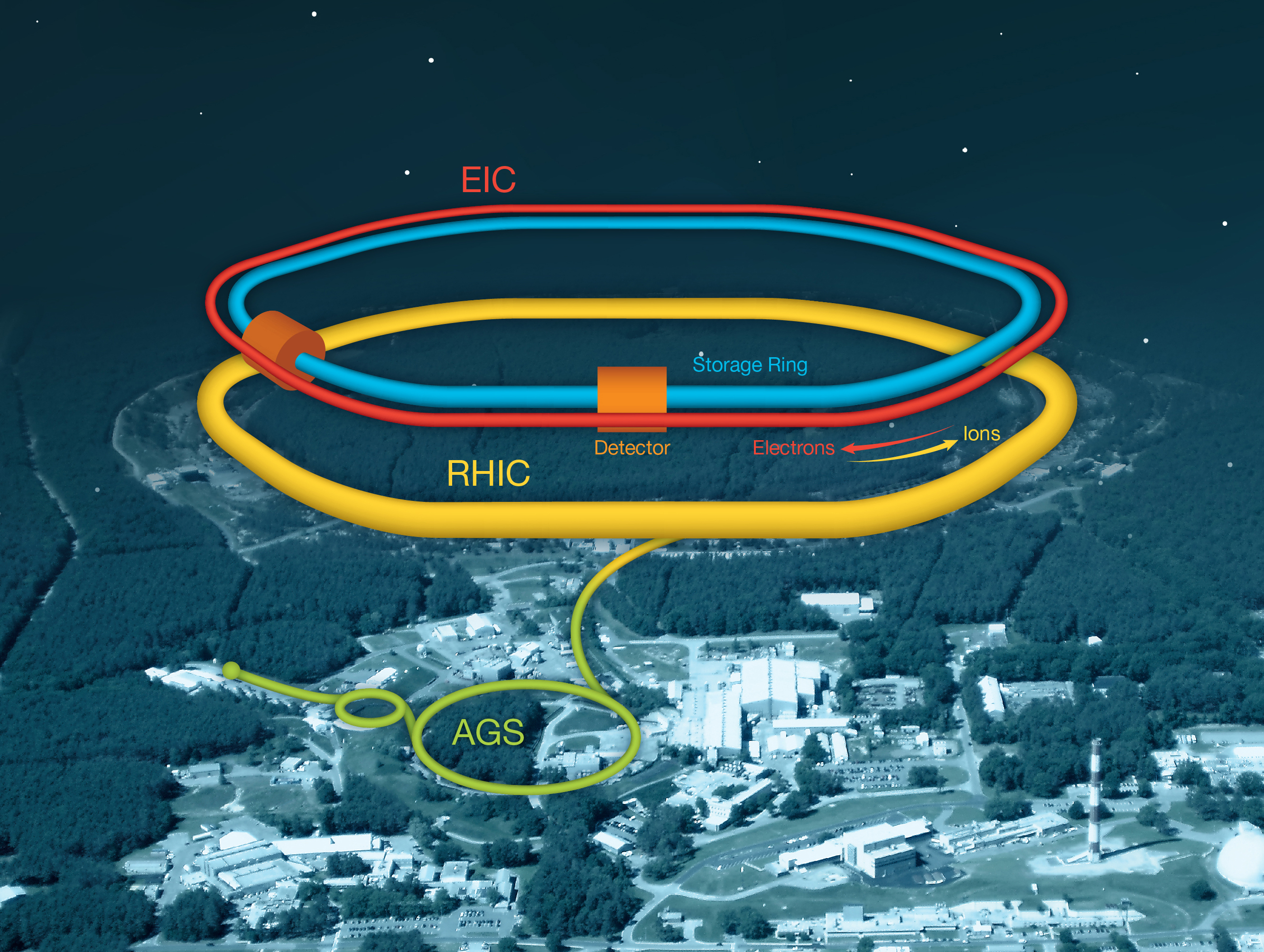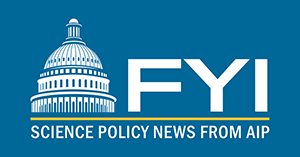What Projects Should Nuclear Physics Prioritize in the Next 10 Years?
Federal committee gets to work on an answer.
By Mitch Ambrose | August 8, 2022

Credit: Brookhaven National Laboratory/Flickr
The not-yet-built Electron-Ion Collider (EIC, in red and blue), which will fit in the tunnel that houses an existing heavy-ion collider (in yellow) at the Brookhaven National Lab in New York.
The US nuclear physics community has launched an 18-month effort to identify new research questions to pursue over the coming decade, and to prioritize the tools—like particle colliders—needed to answer them. The plan will shape investments by the Department of Energy and National Science Foundation, which provide the lion’s share of federal funding for nuclear physics.
The plan will be written by the agencies’ Nuclear Science Advisory Committee (NSAC), which has carried out the process seven times since its inception in 1979. The committee will recommend funding levels and projects required for the US to “maintain a world-leadership position” in nuclear physics.
NSAC’s process has proven so effective at forging consensus priorities that other fields, including high energy physics and fusion research, have adapted it.
The committee will hold a kickoff event at the APS Division of Nuclear Physics meeting in Louisiana this October, and the division is holding a series of workshops leading up to it to collect community input.
Two high-priority goals in the previous NSAC plan, published in 2015, were to complete the Facility for Rare Isotope Beams (FRIB) at Michigan State University and to begin construction of an Electron Ion Collider (EIC). Those goals have come to fruition: FRIB began operating earlier this year, and the DOE has laid the groundwork for building the EIC at Brookhaven National Laboratory.
The FRIB and EIC facilities are essentially locked in as priorities for the next plan, so NSAC’s task now is twofold: keep these facilities’ operation and construction on track, and figure out what additional major projects to pursue in the coming decade.
FRIB can synthesize and sort more than 1,000 isotopes of heavy elements, many of which never before existed on Earth. The facility will yield insights into nucleus stability, help scientists understand how heavy elements form through astrophysical processes, and even shape applications in fields like medicine and materials science.
The EIC will share a tunnel with Brookhaven’s existing Relativistic Heavy Ion Collider (RHIC), which has been operating since 2000. When complete, the EIC will let scientists probe atomic nuclei with unprecedented precision.
The DOE estimates that the collider—slated to be completed in the early 2030s—will cost around $2 billion. However, EIC Project Director Jim Yeck testified in July that Congress has funded the collider at levels “well below” those needed to keep the project progressing smoothly. He warned that Brookhaven might lose personnel critical to EIC construction after the planned shutdown of RHIC in 2025.
The budget demands of the EIC and other existing projects will affect how quickly DOE can pursue new projects, absent sufficient increases to the agency’s topline budget. For example, an outstanding priority is the search for neutrinoless double beta decay, a theorized phenomenon that, if detected, promises to reveal new physics beyond the Standard Model.
Less progress has been made on the search than hoped: In 2015, the committee expected that the DOE would commit “in a few years” to building a “ton-scale” experiment capable of finding the phenomenon, but—seven years later—it has not selected a design to pursue. However, DOE Nuclear Physics head Tim Hallman is a strong proponent of the idea.
“The potential discovery of a neutrinoless double beta decay would be every bit as much of a game-changer as the discovery of supersymmetry at CERN, and as compelling as any accelerator-based research currently underway,” he told NSAC last year.

Mitch Ambrose is Director of FYI. Published by the American Institute of Physics since 1989, FYI is a trusted source of science policy news. Sign up for free FYI emails at aip.org/fyi.
©1995 - 2024, AMERICAN PHYSICAL SOCIETY
APS encourages the redistribution of the materials included in this newspaper provided that attribution to the source is noted and the materials are not truncated or changed.
Editor: Taryn MacKinney
September 2022 (Volume 31, Number 8)
Articles in this Issue

